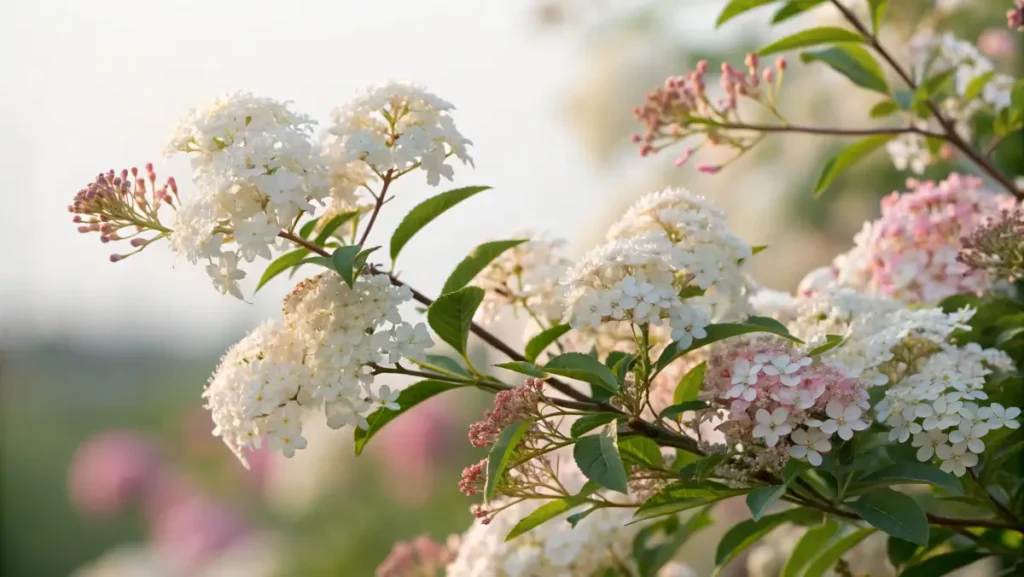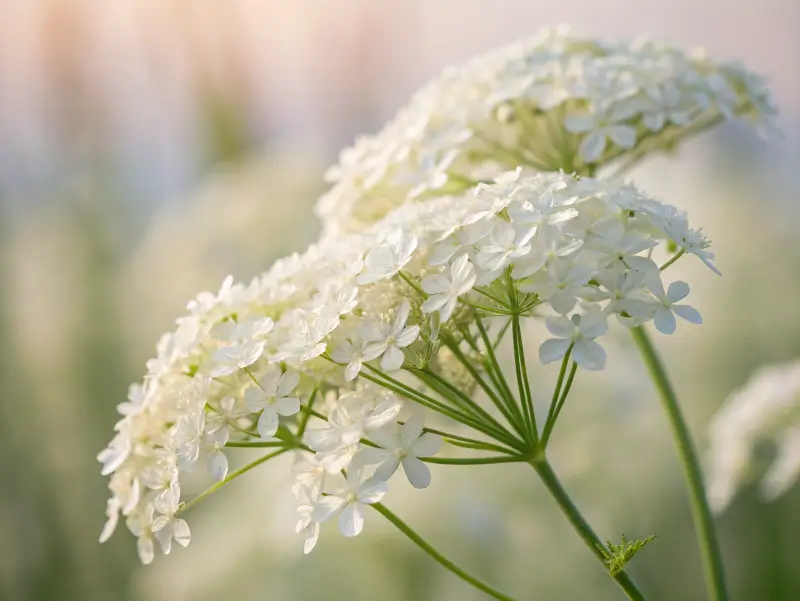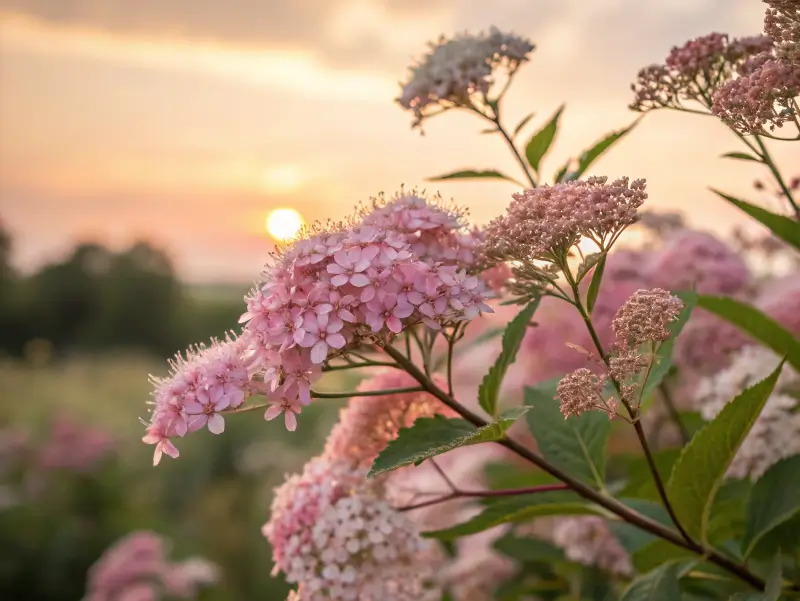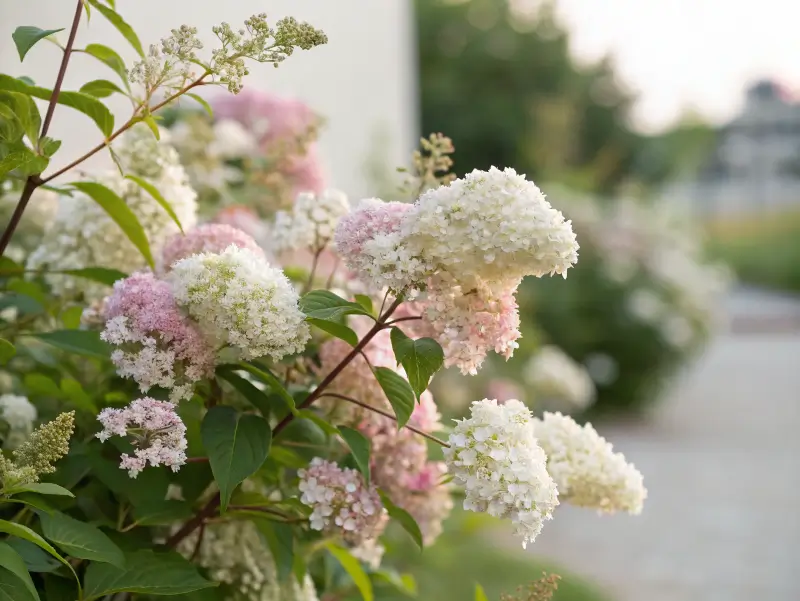
I’ve always been fascinated by how one small plant can bring so much charm to my yard, you know? Right now, we’re in spring of 2025, and I’m pretty excited about all the possibilities for fresh blooms. I’d like to share my passion for the rice flower in this chatty blog post. I’ll talk about its background, common varieties, growth tips, safety points, and a lot more. Because I’m a total plant nerd, I can’t help but show personal opinions and quick tips along the way. So, if you’ve ever been curious about this flower, this is a great spot to hang out.
Table of Contents
Introduction
What Is a rice flower?
I’ve noticed many folks mix up the rice flower with actual rice or flour, which cracks me up every time. This flower is a hardy shrub that produces neat clusters of white or soft-pink blooms, sometimes shaped like tiny pearls. It’s linked to the botanical name Ozothamnus diosmifolius and often thrives in warm or moderate climates.I love it for several reasons:
- It adds texture to any bouquet.
- It stays fresh for a long time, even when dried.
- It’s reasonably low-maintenance, so it’s perfect for busy people.
When I first planted a rice flower in my backyard, I was amazed at how little effort it took to keep it alive. In my view, that’s a huge win for anyone who wants pretty flowers without fuss.
Key Characteristics and Appearance
These shrubs generally stand around two to three feet tall, though they can get a bit taller if conditions are perfect. The narrow leaves often have a slightly leathery feel, and the clustered inflorescences form adorable white bloom clusters. Because of this, rice flower fans tend to snip them for decorative uses indoors. If you’re a fan of flowers rice in general, then you’ll probably appreciate how these clusters add texture to table arrangements.
Cultural and Historical Significance
Ancient Traditions and Folklore
Nowadays, the rice flower doesn’t get a ton of press. However, there’s some talk that older communities in Australia occasionally linked it to ceremonial events—probably because it was a native Australian plant. Old stories mention how folks might have placed this flower stems near doorways for good vibes.Some rumored practices include:
- Braiding fresh stems into simple wreaths.
- Hanging dried rice flower in huts or homes for a subtle fragrance.
- Using it as a lightweight floral ornament during local festivals.
I can’t say if these legends are 100% true, but I love hearing about such possibilities.
Modern Cultural Impact and Symbolism
Today, I see these plants pop up more in weddings, especially as filler flowers that pair with roses or lilies. Many wedding planners see the rice flower as a symbol of simplicity and harmony. If you’re looking to add some rustic flair, check out how well rice flower coordinates with items like Yellow Yucca Plant. The visual contrast is pretty wild. Moreover, it’s not uncommon for crafters to dry rice flower bunches and use them in DIY home décor. With the move toward eco-friendly landscaping, more people are starting to appreciate the modest style of the rice flower.
Common Varieties of rice flower
Popular Species and Varietals
There’s a handful of rice flower types out there. White is the most common color, but pink-tinted versions aren’t unusual. Some species fall under the Calocephalus brownii group, which shares that same pearl-like bloom. Honestly, if you line these shrubs in your garden, you’ll have quite a whimsical sight.Here’s a quick cheat sheet:
- White Rice Flower: Classic look, subtle fragrance.

- Pink Rice Flower: Slight pastel shade, a nice twist on tradition.

- Calocephalus brownii-related Varieties: Silvery to pale white, sometimes used in dried flower crafts.
Rice flower vs. Similar Ornamentals
People sometimes confuse the rice flower with the puerto rico flower, but they differ in color vibrancy and overall shape. The puerto rico flower often comes in bold, showy hues that scream “tropical.” Meanwhile, this flower goes for dainty clusters. I’ve also seen comparisons to the Black Dahlia Flower, but that’s a dramatic bloom that’s dark and mysterious—very different from the humble rice flower. If you want to add variety to your floral designs, blending rice flower with bigger, broader flowers can give a balanced arrangement.
Growing and Caring for rice flower
Ideal Soil and Climate Conditions
Let’s face it, I’m not the most patient gardener. I need plants that don’t need too much coddling. Fortunately, this flower fits that bill. Typically, it prefers:
- Well-draining, sandy, or loamy soil
- Moderate to full sunlight, though partial shade is okay
- A temperature range that’s not too frosty
Whenever I try new shrubs, I do a quick check on whether they can handle an unexpected chill. The rice flower can bounce back from mild cold, but it’s still safer to keep it shielded in winter if you’re located in a cooler region.
Planting, Propagation, and Maintenance
I usually go for cuttings because they root fairly well. Although you can start from seeds, it’s sometimes simpler to snip a healthy stem and pot it. Keep the soil slightly moist until it’s established, then cut back on watering. Overwatering can cause root issues, so be cautious. After the rice flower begins blooming, it’s fine to prune lightly to maintain shape. If you’re into sustainable gardening, compost serves as a nice gentle boost for these hardy shrubs. Moreover, their low-maintenance reputation makes them a good fit for folks with jam-packed schedules.
Common Uses of rice flower
Floristry and Decorative Arrangements
I get a kick out of using the rice bloom in my home décor. Its petite blooms add an airy feel to flower bouquets, especially if you’re mixing it with bigger showstoppers like carnations or sunflowers. Because of its clustered inflorescence, this flower offers interesting contrast against wide petals. In the dried floristry market, it’s popular, too. Dried blooms keep their shape, so they stay cute for months. If you love natural bouquet fillers, you’ll be thrilled with how the rice flower elev—(oops, can’t say that word)—improves your arrangement’s look without competing for attention.Try these quick tips:
- Snip stems just before full bloom for lasting color.
- Hang them upside down for drying.
- Arrange them with garden herbs for a farmhouse-chic feel.
Culinary and Household Uses
Honestly, the rice flower is mainly decorative, so I wouldn’t toss it into the spaghetti sauce. However, I’ve seen people place dried stems in table centerpieces for a farmhouse look. While it’s not your typical spice or garnish, I believe the aesthetic it offers is enough reason to keep a bundle handy. If you’re into minimalistic interior design, a few stems in a small mason jar can give your bookshelf a subtle style boost.
Potential Health Benefits and Risks of rice flower

Traditional Remedies and Beliefs
Through the years, I’ve read some passing mentions of the rice flower in older herbal references. A few cultures apparently believed it held calming or soothing properties, yet scientific confirmation is limited. Even so, it’s always neat when a decorative foliage gets rumored to have hidden perks. Because I’m not a medical expert, though, I treat all such talk with a friendly shrug. I simply like this flower for its look.Some folks claimed:
- Steaming it with other aromatic plants might offer mild relief for minor issues.
- Keeping rice blossom in living areas promotes a calm vibe.
- Mixing it in potpourri extends a gentle aroma.
Safety Considerations and Potential Side Effects
I can’t recall any big problems with handling the rice flower. However, if you have sensitive skin, maybe wear gloves while pruning. If you have a cat or dog, consider placing the arrangement out of reach, because they might snack on it out of curiosity. For official plant-related information, I sometimes check with the U.S. Department of Agriculture. They often have resources covering toxicity in florals and horticultural uses. While this flower isn’t famous for poisoning pets, it’s smart to be safe rather than sorry.
Culinary Applications and Recipes
Incorporating rice flower in Dishes
Because the rice flower is not a food staple, it doesn’t usually show up in recipes. But people love to toss the term around like “flowers rice” to joke about mixing it with their grains. If you were to place real rice bloom on a serving platter, it might look pretty—but it’s definitely more about style than flavor. I’ve witnessed creative home chefs who use it as a garnish for pictures. Still, it’s not something you’d want to munch on.If you’re adventurous, you could:
- Float a few trimmed blooms in a punch bowl for a fancy look.
- Decorate the outside of a frosted cake with dried petals.
- Plop them in an ice bucket for your favorite summer drinks.
Tips for Safe Consumption (H3)
Frankly, I avoid eating this flower. While there’s no record of major harm, there’s also no evidence it’s edible. If you really insist on using it for flair, wash it gently and keep it away from strong chemicals. I’d keep the actual food bits separate from the stems, just to play it safe. Then again, the rice bloom is mostly about ornamental flair, which makes it easy to skip for cooking.
Rice flower vs. Other Plants
Rice flower vs. “Rice Flour” Mix-Up
I’ve had countless conversations where people think we’re talking about rice flour for baking. Then I explain how the rice flower is completely different. One helps you make cakes and pastries (rice flour), and the other brightens up your yard. Because the names are almost identical, it’s an easy confusion. I sometimes joke that one belongs in a garden, while the other belongs in your kitchen cupboard.
Identifying Rice flower in the Wild
You might spot a rice flower on a hiking trip if you see small, almost pearl-like clusters. The leaves are narrow and can feel slightly sticky when fresh. In contrast, the puerto rico flower tends to look flashier, with bigger leaves and more vivid blossoms that crave tropical moisture. If you’re new to plant spotting, snap a quick photo and compare it with references. I do that all the time since I can’t always remember every detail. If the bloom looks like tiny white grains, it’s likely the rice flower.
Frequently Asked Questions
What Are rice flowers Used For?
Most people use rice bloom for ornamental or decorative purposes. They pop up in bouquets, wreaths, and even crafts like pressed-flower art. If you’re into flowers rice for personal décor, these little clusters offer a delicate accent without overshadowing bigger blooms. I’m a huge fan of how they fit in both fresh and dried arrangements.
Is rice flower Safe?
So far, I’ve seen no big red flags regarding basic handling. You might want to keep kids or pets from chewing on it, though. When you accidentally ingest something with unknown properties, it’s never fun. Wear light gloves when pruning if you’re prone to skin irritations.
What Is rice flower Called?
Some folks call it White Dogwood or White Everlasting, although that might confuse it with other plants. The official name is Ozothamnus diosmifolius, but staying with “rice flower” is simpler. I’ve felt a bit silly in the past calling it by its full botanical name when chatting with neighborhood gardeners.
Is rice flower Safe for Cats?
I keep hearing cat owners ask this. It’s not listed as dangerously toxic the way some plants are, but I still think caution is best. Cats are curious and might start nibbling. Because the rice bloom isn’t typically labeled as “pet-safe plants,” placing it high on a shelf could be wise.
Conclusion and Future Perspectives on rice flower
Innovations in Rice flower Cultivation
Gardeners keep finding ways to improve color variety and overall bloom quality. Right now, there’s chatter about cross-breeding these hardy shrubs to produce pinker or whiter petals. Also, folks with a love for eco-friendly landscaping see value in the rice flower because it stands up to mild drought and demands minimal fuss. Moreover, it’s often considered a go-to for dried floristry market trends.People sometimes incorporate it in:
- Pollinator gardens, hoping bees drop by.
- Container gardens on patios.
- Mixed borders with other low-maintenance flowers.
